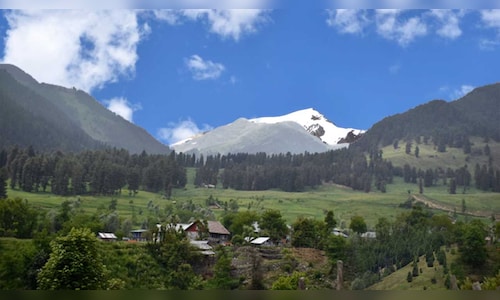Elections to the 90-member Jammu and Kashmir assembly will be held in three phases on September 18, 25 and October 1, with Haryana voting for its 90 legislators on October 1. The results will be declared on October 4.
Jammu and Kashmir
The people of Jammu and Kashmir will elect a government after a decade, a period during which the situation on the ground has changed since the electorate last exercised its right to vote. The abrogation of Article 370, the loss of statehood and conversion into a Union Territory in 2019 provide an important context for the elections, amid other issues related to livelihoods, economy and development.
The previous government, formed after the state assembly elections in 2014, saw the emergence of a coalition government between the J&K regional People’s Democratic Party (PDP) headed by Mufti Mohammed Sayed and the BJP. The arrangement fell apart in 2018, when the BJP withdrew its support for Chief Minister Mehbooba Mufti, who found herself in power after the death of her father. In the last assembly elections, the PDP won 28 seats out of 83 in the House (excluding four Ladakh seats out of the original 87 seats), the BJP 25, the NC 15, the Congress nine and six others.
Jammu and Kashmir, with two distinct regions (Jammu and the Valley), has a mixed political presence. The BJP, entrenched in Jammu, and the two regional parties, the PDP and Farooq Abdullah’s Jammu and Kashmir National Conference, dominated in the Valley. Now, this position is seriously challenged. The Congress, which in the past partnered with the NC/PDP, will have to work hard to mark its presence in the legislature.
The situation has changed with the rise of other parties, one of which, the Awami Ittehad Party, upset the calculations in the recent Lok Sabha elections. On the other hand, the efforts of former Congress leader Ghulam Nabi Azad, who floated the Azad Democratic Progressive Party, have failed to gain momentum, while Sajjad Lone’s Jammu and Kashmir People’s Conference is struggling.
Awami Ittehad Party founder Engineer Rashid announced his arrival on the national scene in June, winning the Baramulla Lok Sabha constituency defeating formidable candidates, former chief minister Omar Abdullah and Sajjad Lone. It will be interesting to watch the approach of Rashid’s party, who is still behind bars in a terror funding case.
The elections in J&K are attracting widespread attention across the country and the world. This time, the attention is magnified as nearly 880,000 voters, including 427,000 who registered for the first time, will elect a government after 2019. Developments have taken place – the redrawing of electoral boundaries, changes in administration and reservation of seats for scheduled castes and tribes.
Haryana
Haryana, which shares borders with Delhi, Punjab and Uttar Pradesh, is where the Bharatiya Janata Party has headed the government for the past decade. For the first five years between 2014 and 2019, the BJP ran a solo government and needed the support of the regional Jananayak Janata Party in the soon-to-end second term. Differences on some issues led the latter to walk away from the venture.
Despite its geographical proximity to Delhi, Haryana offers a conducive backdrop for the Congress to come back into the fray after spending a decade holding the opposition seats in the assembly. The BJP is facing multiple challenges. Despite handing over the reins to Nayab Singh Saini as chief minister, the party has not yet managed to shed the image of former chief minister Manohar Lal Khattar. Politics in the state revolves around Jaat versus no Jaat, a practice that the late Bhajan Lal practised for political gains.
The Jaat community traditionally supports the Indian National Lok Dal and the Jananayak Janata Party (JJP). The leadership of these parties owes its lineage to the late stalwart Devi Lal. The Jaats appear to be drifting away in part. The Congress Party senses an opportunity to woo disaffected sections through Jaat leader Bhupinder Singh Hooda. The dominant Jaats, who are engaged in agriculture, resent the treatment of farmers and perceive themselves to be suffering unfair treatment.
The Congress is well placed to improve on its 2019 tally of 31 seats against the BJP’s 40 and the JJP’s 10. During the 2024 Lok Sabha, both the Congress and the BJP share 10 seats equally. Though the Congress faces an internal struggle, it can consolidate and unite behind Hooda, who is projected as a leader of all the ‘Chhatis Biradari’ (the state’s 36 communities, including the Jaats, Punjabi and other castes).
—The author, KV Prasad, is a writer and political analyst. The views expressed are his own.
Read his previous articles here
Disclaimer:
The information contained in this post is for general information purposes only. We make no representations or warranties of any kind, express or implied, about the completeness, accuracy, reliability, suitability or availability with respect to the website or the information, products, services, or related graphics contained on the post for any purpose.
We respect the intellectual property rights of content creators. If you are the owner of any material featured on our website and have concerns about its use, please contact us. We are committed to addressing any copyright issues promptly and will remove any material within 2 days of receiving a request from the rightful owner.

